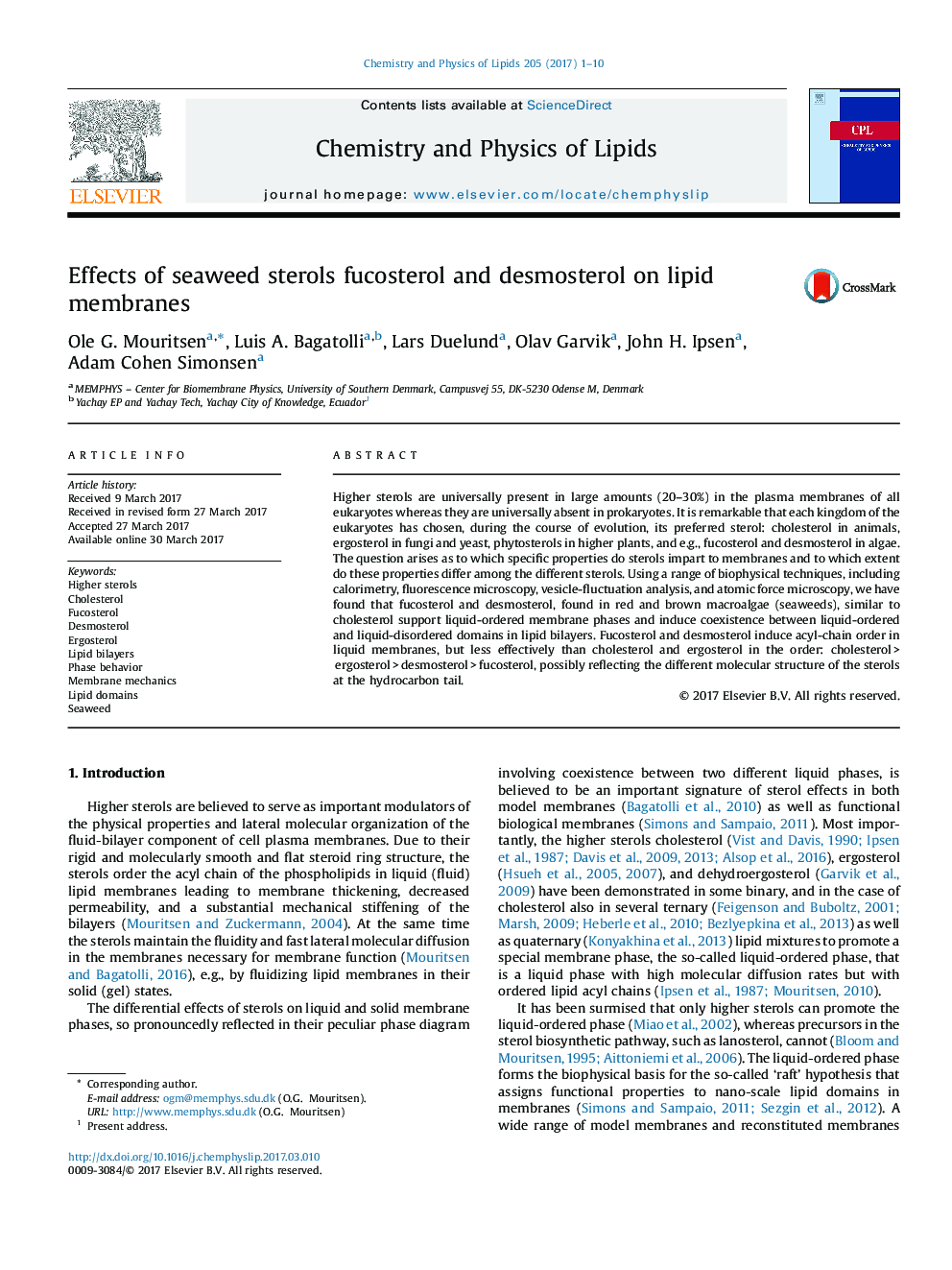| Article ID | Journal | Published Year | Pages | File Type |
|---|---|---|---|---|
| 5142668 | Chemistry and Physics of Lipids | 2017 | 10 Pages |
Abstract
Higher sterols are universally present in large amounts (20-30%) in the plasma membranes of all eukaryotes whereas they are universally absent in prokaryotes. It is remarkable that each kingdom of the eukaryotes has chosen, during the course of evolution, its preferred sterol: cholesterol in animals, ergosterol in fungi and yeast, phytosterols in higher plants, and e.g., fucosterol and desmosterol in algae. The question arises as to which specific properties do sterols impart to membranes and to which extent do these properties differ among the different sterols. Using a range of biophysical techniques, including calorimetry, fluorescence microscopy, vesicle-fluctuation analysis, and atomic force microscopy, we have found that fucosterol and desmosterol, found in red and brown macroalgae (seaweeds), similar to cholesterol support liquid-ordered membrane phases and induce coexistence between liquid-ordered and liquid-disordered domains in lipid bilayers. Fucosterol and desmosterol induce acyl-chain order in liquid membranes, but less effectively than cholesterol and ergosterol in the order: cholesterol > ergosterol > desmosterol > fucosterol, possibly reflecting the different molecular structure of the sterols at the hydrocarbon tail.
Keywords
Related Topics
Physical Sciences and Engineering
Chemistry
Chemistry (General)
Authors
Ole G. Mouritsen, Luis A. Bagatolli, Lars Duelund, Olav Garvik, John H. Ipsen, Adam Cohen Simonsen,
